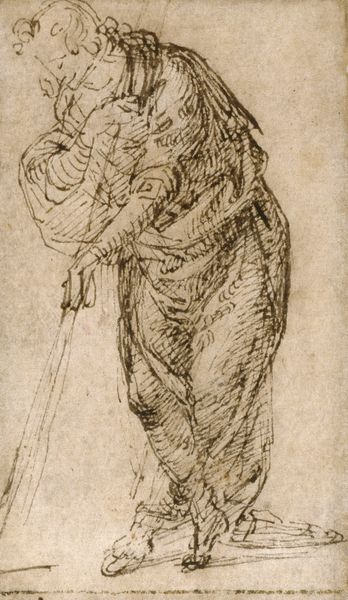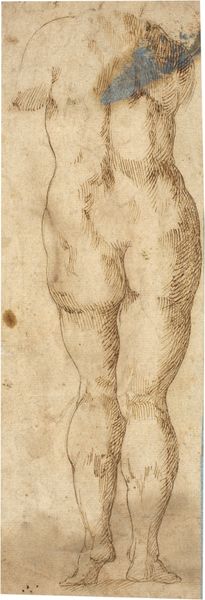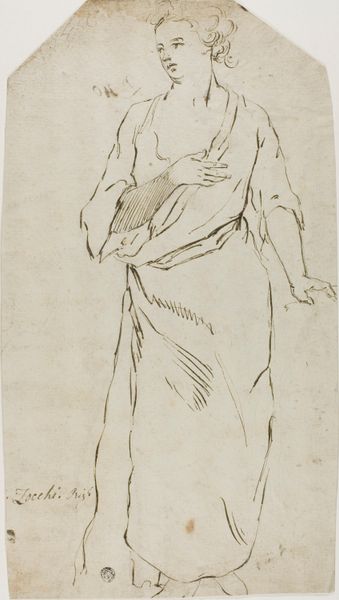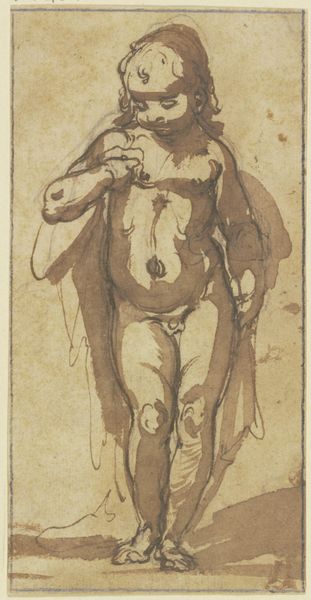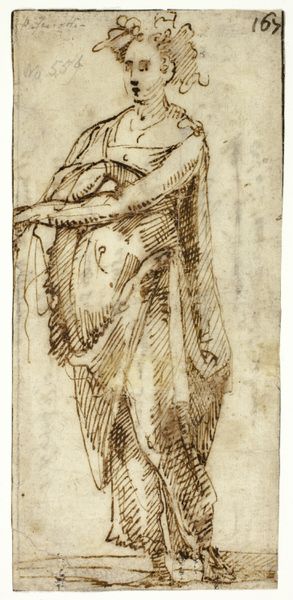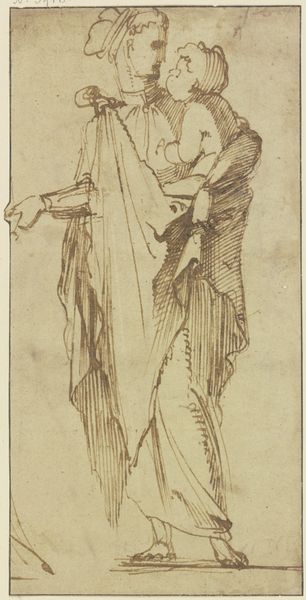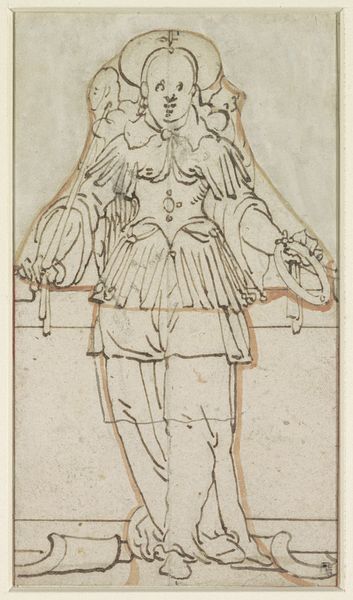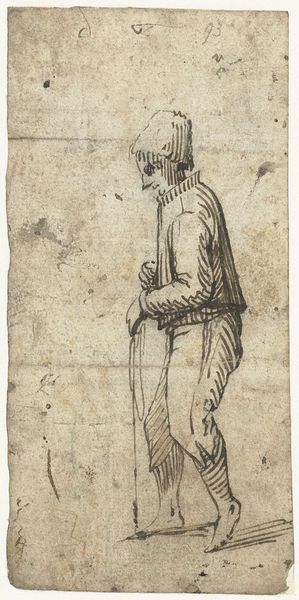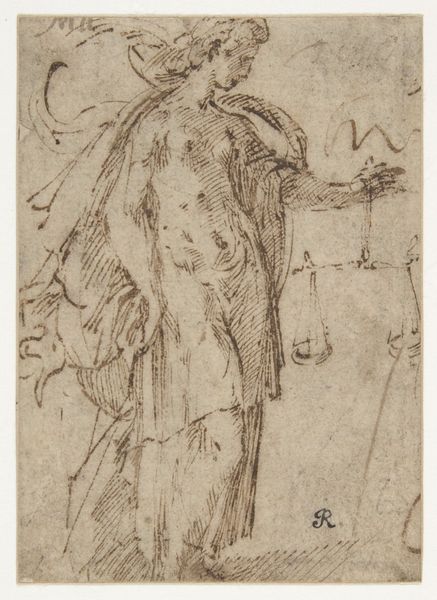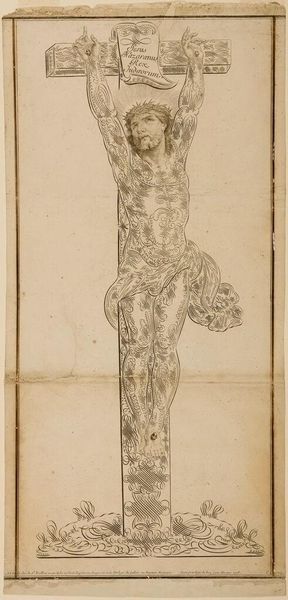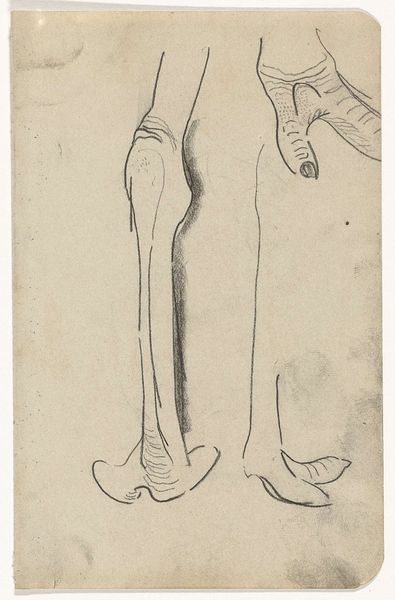
drawing, pencil
#
portrait
#
drawing
#
pencil sketch
#
figuration
#
11_renaissance
#
pencil
#
italian-renaissance
#
nude
Dimensions: height 165 mm, width 55 mm
Copyright: Rijks Museum: Open Domain
Curator: Standing before us, we have a pencil drawing created sometime between 1500 and 1600, attributed to Erhard Schön. It's called "Staande man met lendendoek," which translates to "Standing Man with Loincloth." Editor: My first thought is that it's classical, but in a tentative way. It looks like an exploration of form, more than a declaration. A figure captured in media res. Curator: It's fascinating how Schön uses line here. It's not just about outlining; it's almost sculptural, defining muscle tone and form through cross-hatching. The subject itself seems like a figure pulled from antiquity but also rendered with a slightly more... naturalistic approach. Editor: Right, the symbol of the male nude has so much weight. This drawing hints at the canon of idealized male beauty stretching back to the Greeks. And yet there is this tension as it's on paper rather than marble. Does this emphasize vulnerability or approachability, removing it somewhat from the sphere of godliness? Curator: That tension is precisely what captures my attention, particularly within the historical context. The Renaissance was a period of intense shifts in understanding the body – politically, socially, artistically. The renewed interest in the classical world brought ideas about gender and power to the surface, and I think Schön is investigating what those inherited symbols really meant. Editor: Indeed. Think about how the loincloth serves almost as a fig leaf – not entirely covering, yet gesturing toward a sense of modesty. How this cloth circles around the man connects him to a tradition, while still maintaining the potency and strength of this individual's being. Curator: Absolutely. And in showing this very particular tension through the work – we get something truly special to think about: How the very act of observing the artwork shifts those dynamics of gender, of power, of representation – even five hundred years on! Editor: What you’ve mentioned just opens the figure to additional interpretation as both strength and sensitivity simultaneously. Thank you for sharing your ideas. Curator: My pleasure; it's that complexity that I find so enduringly powerful in Schön's study.
Comments
No comments
Be the first to comment and join the conversation on the ultimate creative platform.
